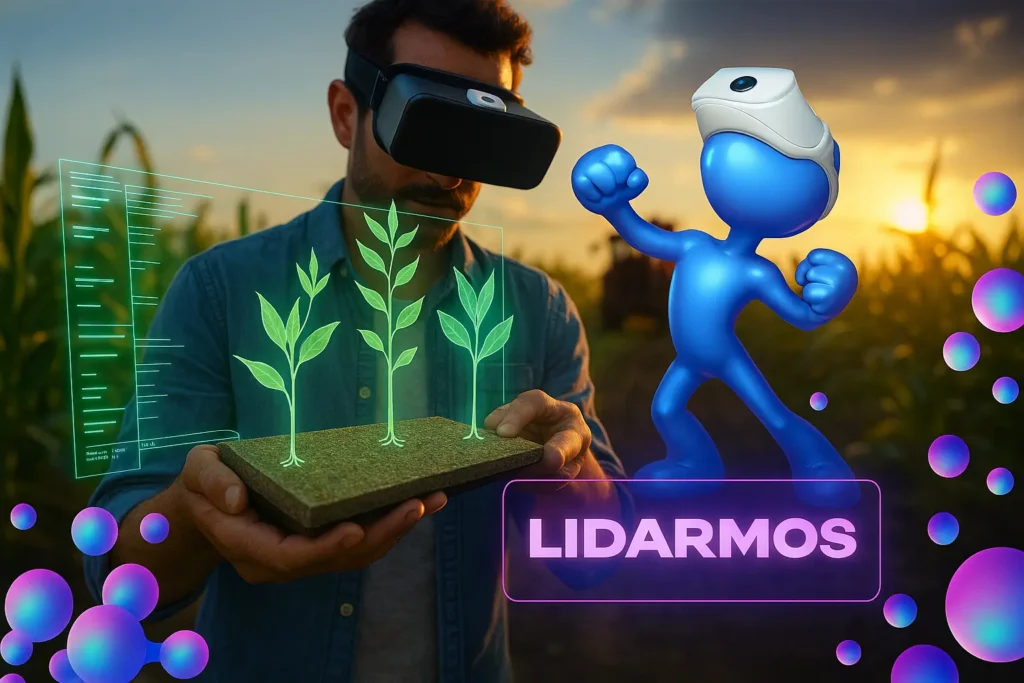In today’s fast-paced world, where precision and real-time data define innovation, Lidarmos is transforming the way industries use LiDAR technology. From autonomous vehicles to environmental monitoring and 3D mapping, Lidarmos is setting new standards for speed, accuracy, and intelligent data processing. Businesses, researchers, and engineers are embracing this advanced solution to save time, enhance decision-making, and unlock opportunities that traditional methods simply can’t match.
What Is Lidarmos?
Lidarmos is an advanced, AI-powered LiDAR-based system designed for real-time data collection and analysis. Unlike conventional LiDAR tools, Lidarmos integrates point clouds with machine learning and integration with artificial intelligence, allowing users to detect, map, and interpret objects with extreme precision.
The system utilizes a network of high-resolution sensors to capture millions of laser-based measurements per second, generating accurate 3D visualizations of environments. Whether used in autonomous vehicles, smart cities, construction, or agriculture, Lidarmos stands as a next-generation solution for industries that demand flawless spatial awareness.
How Lidarmos Works
Lidarmos uses advanced LiDAR data combined with AI algorithms to identify objects, terrain, and structures. The system scans the surrounding environment and processes real-time data into accurate 3D models, which are then used for navigation, monitoring, and decision-making.
Key processes involved include:
- Point Cloud Generation – Captures millions of spatial points within seconds.
- Moving Object Segmentation – Differentiates between stationary and moving objects, critical for robotics and autonomous vehicles.
- Enhanced Data Processing – Uses machine learning to improve mapping accuracy over time.
- Integration with AI Systems – Enables predictive analytics and real-world automation.
This seamless combination of hardware and software makes Lidarmos more efficient than traditional mapping and sensing methods.
Key Features and Advantages of Lidarmos
Businesses across multiple sectors are rapidly adopting Lidarmos due to its real-world applications and ability to deliver enhanced data for critical operations.
Real-Time Processing
Unlike traditional LiDAR solutions, Lidarmos processes data instantly, enabling fast and informed decision-making.
Superior Accuracy
With millimeter-level precision, Lidarmos provides detailed 3D mapping that supports highly sensitive operations, from environmental monitoring to urban planning.
Integration With AI
Through integration with artificial intelligence, Lidarmos not only collects data but also interprets it intelligently, improving outcomes in automation, safety, and analytics.
Saves Time and Costs
By minimizing the need for manual data processing, Lidarmos streamlines workflows, reducing both project costs and execution time.
Scalability Across Industries
Whether for drones, autonomous vehicles, or infrastructure projects, Lidarmos offers flexibility and can easily integrate into existing technologies.
Real-World Applications of Lidarmos
Lidarmos is reshaping how industries capture and utilize environmental and spatial data. Its ability to handle real-time processing and generate reliable outputs has positioned it as a game-changer across various fields:
- Autonomous Vehicles → Enhances safety by detecting obstacles, pedestrians, and moving objects in complex traffic environments.
- Environmental Monitoring → Tracks deforestation, glaciers, and coastal erosion with high-accuracy 3D data.
- Smart Cities → Improves infrastructure planning, road safety, and traffic management using real-time lidar data.
- Construction & Engineering → Ensures accurate measurements, progress tracking, and project optimization.
- Agriculture → Utilizes 3D mapping and enhanced data to monitor crops, soil, and irrigation systems effectively.
With industries increasingly relying on lidarmos, its real-world applications continue to expand.
Challenges and Limitations of Lidarmos
While Lidarmos offers groundbreaking capabilities, it faces several challenges:
- High Initial Costs – Implementation can be expensive for small businesses.
- Data Management – Handling massive lidar data sets requires advanced infrastructure and storage solutions.
- Weather Sensitivity – Performance may be reduced in extreme weather conditions.
- Integration Barriers – Legacy systems may need custom adaptations for Lidarmos compatibility.
However, as the technology matures and demand rises, these limitations are steadily being addressed.
The Future of Lidarmos
The future of Lidarmos lies in combining lidar technology with cutting-edge AI and machine learning models. Soon, we can expect:
- Better predictive capabilities for autonomous vehicles.
- Improved environmental monitoring for climate change solutions.
- More efficient urban planning for smart cities.
- Cost reductions through wider adoption and technological scalability.
With industries shifting towards enhanced data and real-time applications, Lidarmos is set to become a global leader in LiDAR technology.
Conclusion
Lidarmos represents the next step in intelligent mapping, automation, and environmental analysis. By integrating point clouds, AI, and real-time processing, it delivers unmatched accuracy and efficiency across industries. From autonomous vehicles to environmental monitoring and smart city planning, Lidarmos is paving the way for a data-driven future.
If your business relies on accurate insights, adopting Lidarmos could transform how you capture, process, and apply information.
